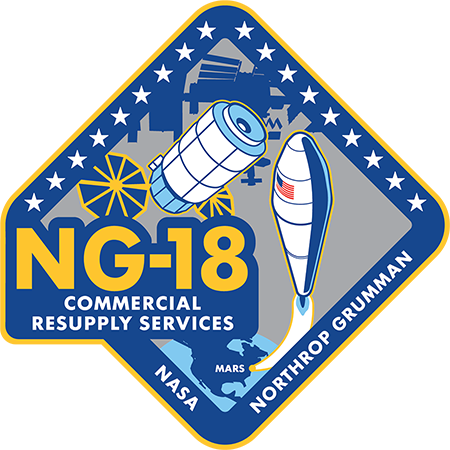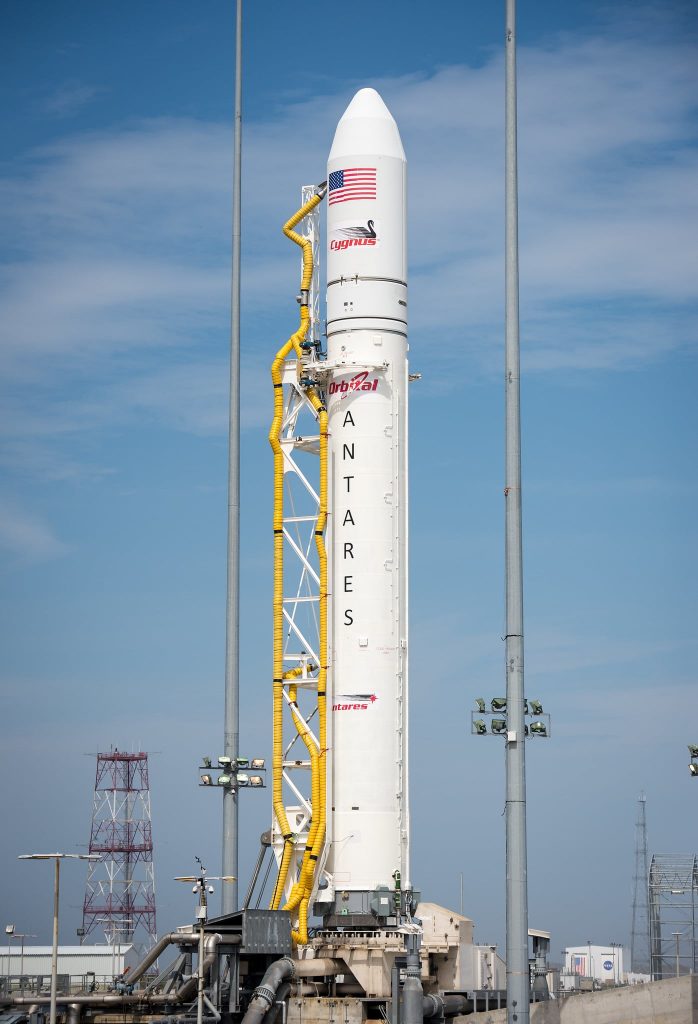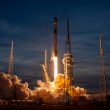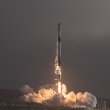Featured Image: NASA / Patrick Black
Lift Off Time | November 07, 2022 – 10:27 UTC | 05:27 EST |
|---|---|
Mission Name | NG-18, S.S. Sally Ride |
Launch Provider | Northrop Grumman |
Customer | National Aeronautics and Aerospace Administration (NASA) |
Rocket | Antares 230+ |
Launch Location | LP-0A, Wallops Flight Facility, Virginia, USA |
Payload mass | ~3,700 kg (~8,200 lb) |
Where is the spacecraft going? | Low Earth orbit, International Space Station rendezvous |
Will they be attempting to recover the first stage? | No, this is not a capability of Northrop Grumman |
Where will the first stage land? | It will crash into the Atlantic Ocean |
Will they be attempting to recover the fairings? | No, this is not a capability of Northrop Grumman |
Are these fairings new? | Yes |
How’s the weather looking? | TBD |
This will be the: | – 17th launch of Antares (any variant) – 12th launch of an Antares 230 series rocket – 19th Cygnus spacecraft to launch – 7th Cygnus spacecraft to launch on an Antares 230+ – 154th orbital launch attempt of 2022 |
Where to watch | Official NASA livestream |
What Does All This Mean?
Northrup Grumman will be launching another Commercial Resupply Services (CRS) mission to the International Space Station (ISS) for NASA on the NG-18 mission. The Antares 230+ rocket will carry around 3,700 kg (~8,200 lb) of food, water, experiments, and other necessary resources. These resources are packed into a Cygnus cargo vehicle, which is built by Northrop Grumman and named after former NASA astronaut Dr. Sally Ride.

Payloads On NG-18
NG-18 is Northrup Grumman’s 18th cargo resupply mission to the ISS as a part of the Commercial Resupply Services (CRS). These missions have been essential for transporting crew supplies, like food and clothing, as well as new scientific research experiments to the station since 2014.
First Two Satellites From Zimbabwe And Uganda
Three cube satellites from three different countries have been clustered into a constellation called BIRDS-5. Japan, Uganda, and Zimbabwe each have a satellite in the constellation. Japan is flying TAKA in the constellation, Zimbabwe is flying their first satellite, ZIMSAT-1, and Uganda is also flying their first satellite PEARLAFRICASAT-1. Combined, the satellites will perform multispectral observations using off the shelf hardware.

The overall goal of BIRDS-5 is to collect data on bare ground, forest, and farmland to help distinguish between each surface. This distinguishing will help determine areas best fit for agriculture growth.
The project is a cross-university project which allows students in developing nations to get hands-on experience developing and building CubeSats. This experience can lead to potential space programs and space education in those countries.
Mudflow Mixtures
The Post-Wildfire Mudflow Micro-Structure experiment requires the microgravity environment available on the International Space Station (ISS). As the global temperature increases, more wildfires naturally occur. Obvious effects of these wildfires are the destruction of wildlife habitats and people’s homes, but more lies beneath the surface.

After wildfires occur, the ground can become covered in chemicals in a thin layer that repels rain water. Rain water then erodes the soil, leading to mudslides which carry boulders and other dangerous debris. There are still many unknowns about these mudflows such as why they are able to carry boulders and what the characteristics of these mudflows include, like how they trap air bubbles.
On Earth exists gravity, making the study of these flows, which consist of sand, water, and air, rather difficult. By removing gravity, the sub-surface and internal structure of the mudflows can be further studied to provide better predictions about these flows like debris travel.
OVOSPACE
OVOSPACE is a joint venture between NASA and the Italian Space Agency (ASI) coordinated by ASI and aims to examine the effect of microgravity on bovine cell cultures. Researchers from the University of Rome assume that the reduced gravity of both the Moon and Mars could interfere with with human fertility, which could threaten the goal of establishing settlements on the Moon or Mars.
Not only do researchers hope to better understand how deragulated reproductive functions could affect human bodies in reduced gravity, but also how they affect and might pose health risks for humans back on earth. By possibly identifying tipping points in the developmental processes of Granulosa cells and Theca cells, researchers hope to identify target points for future pharmacological developments that could help treat and/or restore fertility in people on Earth.

Further Experiments
The experiments and CubeSats above are just a hand full of experiments that will fly to the ISS. On board of Cygnus S.S. Sally Ride are dozens of experiments that will help to improve the understanding of things like medicine, climate, physics and many more disciplines back here on Earth. Other noteworthy experiments will be:
- BioFabrication Facility (BFF)
- Plant Habitat-03
- Gator GrAvitational effecTS on the faraday instaBilitY (Gator GATSBY)
- Engineering Stem Cell-Derived Cardiac Microtissues
What Is The S.S. Sally Ride Cygnus?
The Cygnus Cargo Vehicle is a two part vehicle consisting of parts built across the globe. The service module is based on the GEOStar platform and a pressurized module built by Thales Athena in France. The service module provides power and other critical spacecraft functions to the spacecraft. The pressurized section is where all of the cargo is stored. It is important that this section is pressurized because items such as food are among the resources onboard.
S.S. Sally Ride
Each Northrop Grumman Cygnus spacecraft is named after an individual who played a pivotal role in human spaceflight. The previous Cygnus spacecraft, NG-17, was named after Piers Sellers, a NASA astronaut born in the United Kingdom who completed three spaceflights on the Space Shuttle, multiple EVAs.
This Cygnus cargo vehicle is named after Sally Ride, a former NASA astronaut. Dr. Sally Ride was born on May 26, 1951 in Los Angeles. She was an astrophysicist and was selected by NASA to become an astronaut in 1978. Sally Ride became the first female NASA CapCom and served in this position for the second and third Space Shuttle missions. She became the first female NASA astronaut and the third woman in space in 1983 as a mission specialist on STS-7. STS-41-G marked Ride’s second and final trip to space.
Ride retired in 1987 from NASA to do a fellowship at Stanford University and became a professor of physics at the University of California in 1989 and director of the California Space Institute. From the mid 1990s, Sally Ride led two public outreach programs for NASA and unexpectedly died of pancreatic cancer in 2012. On April 01, 2022, ÑuSat 27 (Sally Ride) was launched as part of the Transporter 4 mission and was named in honor of Dr. Sally Ride.

The Antares 230+ For NG-18
The Antares 230+ is a two stage expendable rocket designed by Northrop Grumman to launch the Cygnus spacecraft to the ISS. Capable of carrying up to 8,000 kg (~17,600 lb) into Low Earth Orbit (LEO), it is the largest rocket operated by the company.
Antares has launched 14 times since its inaugural flight on April 21, 2013 with one major failure. During its fifth launch on October 28, 2014, both the vehicle and the payload were destroyed. The first stage engines were later deemed to be the cause of the failure. The rocket’s AJ26 engines were then changed to Russian RD-181 engines for future flights.

First Stage
The first stage uses two Russian RD-181 engines, providing 3,844 kN (~864,000 lbf) of the thrust. The stage runs on Rocket Propellant 1 (RP-1) and liquid oxygen (LOX). It has a specific impulse (ISP) of 311.9 s at sea level and 339.2 s in vacuum. The stage burns for 215 seconds before being jettisoned and crashing into the ocean.
Second Stage
The second stage uses a Castor-30XL solid rocket motor, fueled by hydroxyl-terminated polybutadiene (HTPB) and aluminum. The stage provides 474 kN (~107,000 lbf) of thrust, and runs for 156 seconds.
Launch Profile
| Min:Sec From Lift-Off | Event | Altitude km (mi.) |
| 00:00:00 | Stage one ignition | 0 (0) |
| 00:00:03.7 | Lift off | 0 (0) |
| 00:03:18 | Main engine cut-off (MECO) | 84.1 (52.3) |
| 00:03:24 | Stage one separation | 89.1 (55.4) |
| 00:03:54 | Fairing separation | 111.3 (69) |
| 00:03:59 | Interstage separation | 114.3 (71) |
| 00:04:07 | Stage two ignition | 118.5 (73.6) |
| 00:06:52 | Stage two burnout/orbit insertion | 176.2 (109.5) |
| 00:08:52 | Payload separation | 176.2 (109.5) |





